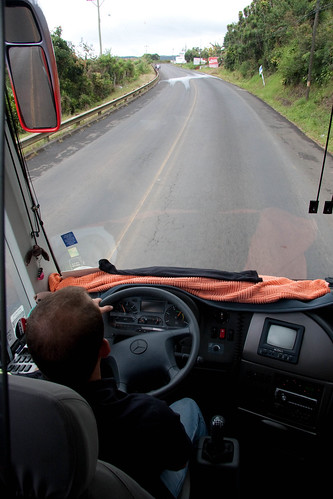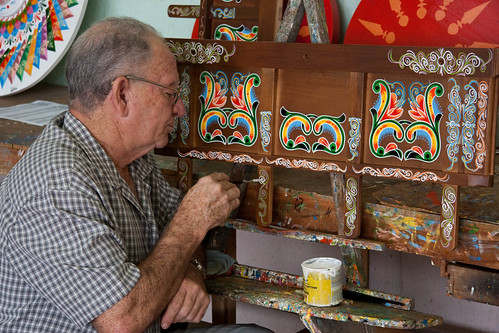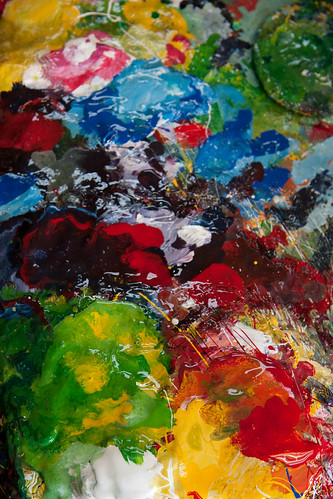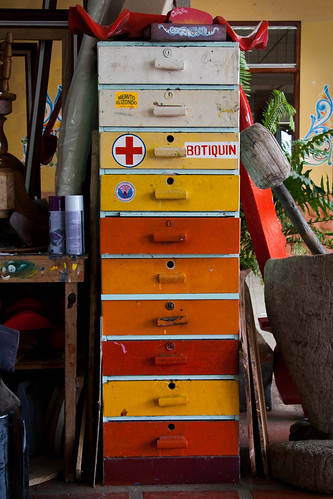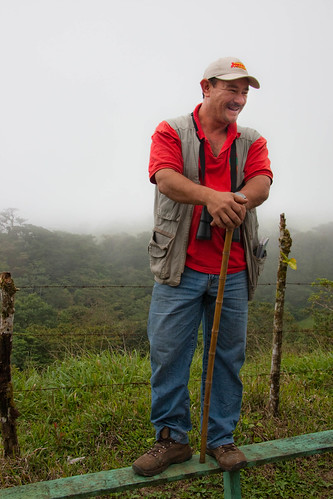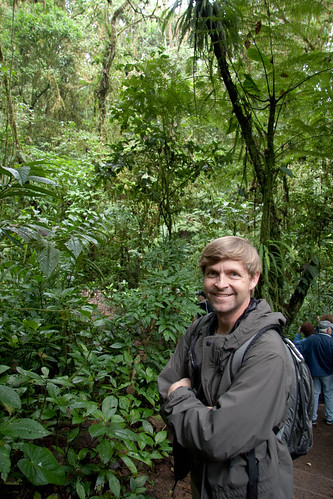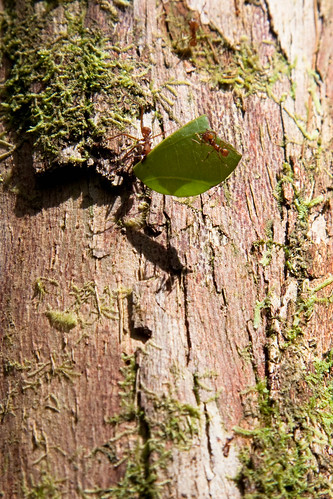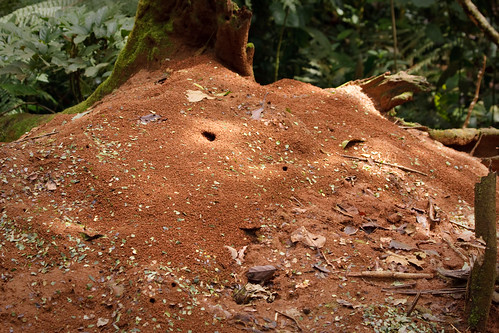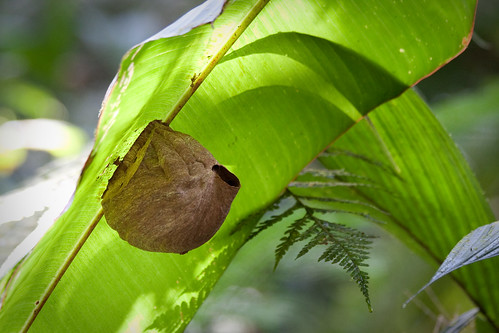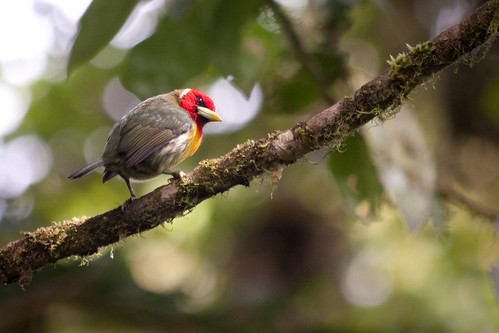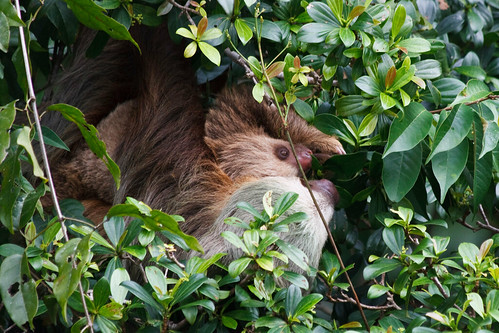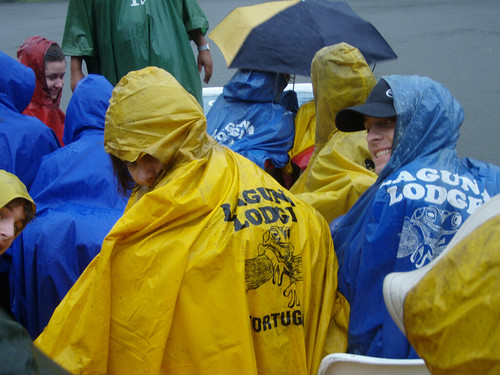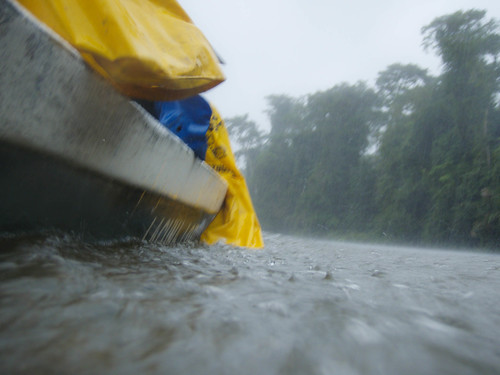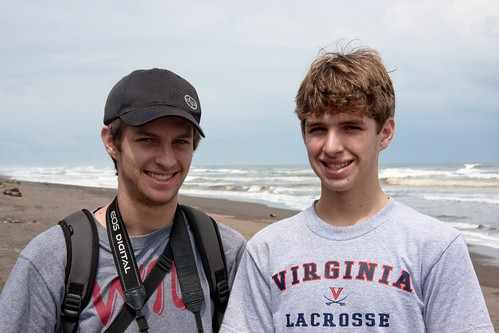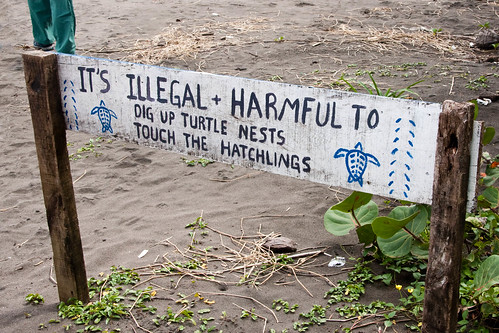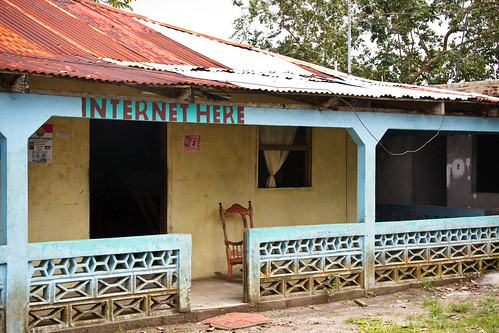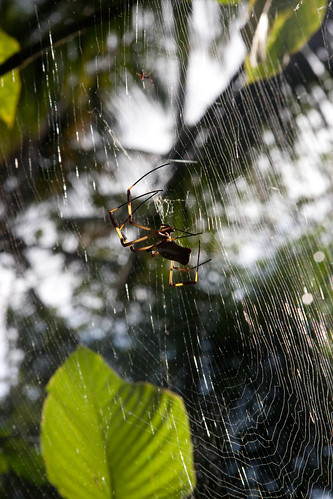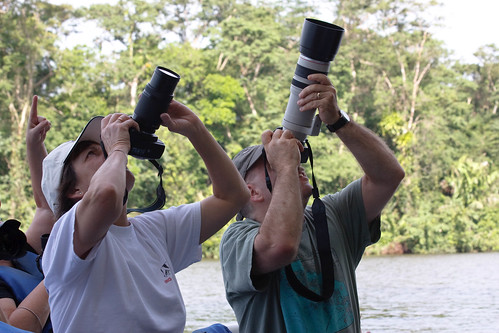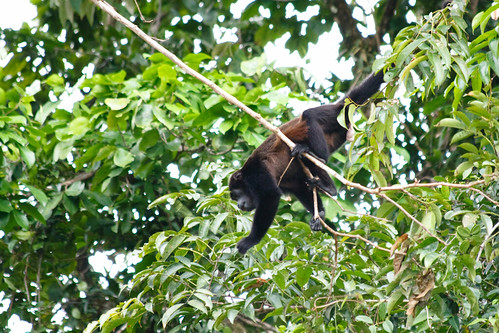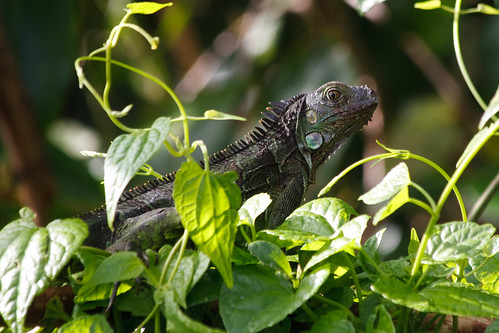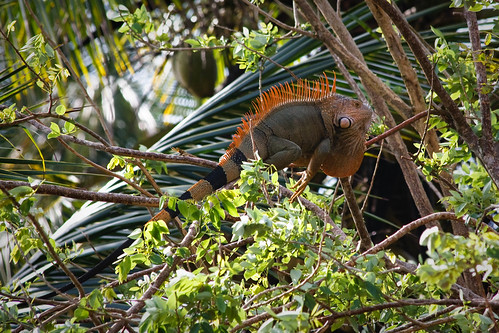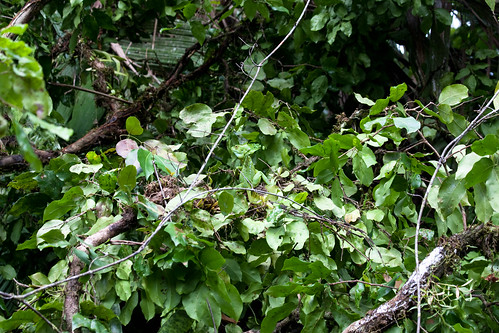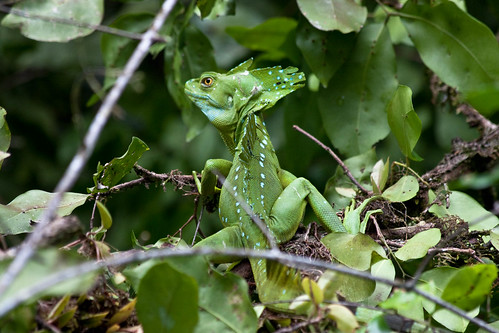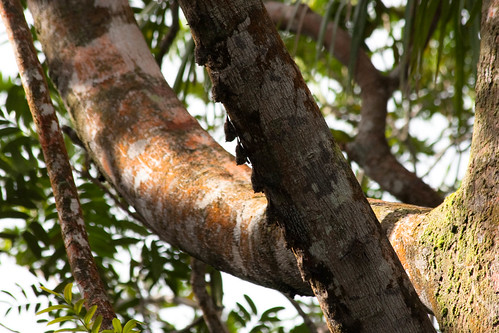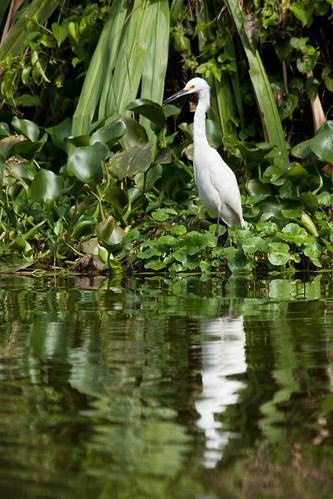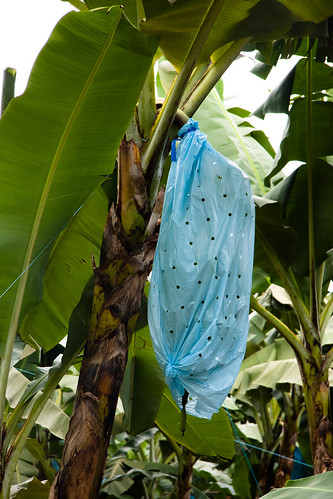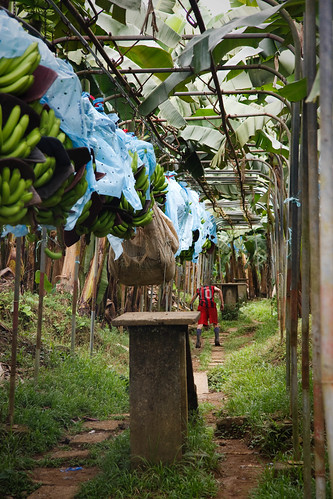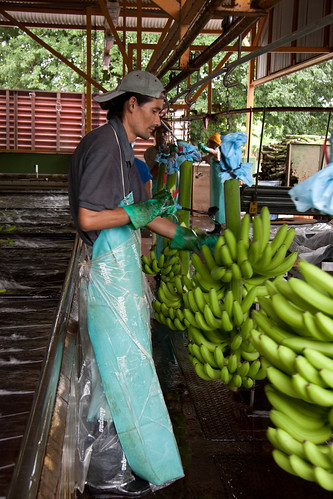We woke up to mostly clear skies this morning, with the volcano above us sporting a cloudy cap that changed every minute. While Sarah and most of the rest of the group headed out to a boat tour near the border of Nicaragua, Eric, Kevin and I headed out to do some zip lining.
The Arenal Mundo Aventura experience was recommended to us so we had booked three reservations the day before. They picked us up at the hotel at 7:30am, and after a couple of other stops to pick up four others we headed over to their park, just a few kilometers outside Fortuna.
This was a great zip line experience, the first for all of us. After a safety introduction they loaded us into something like a bus that was towed up a dirt road by a tractor to a cable platform. We got out there, put on our harnesses and hiked up the mountain for another 15 minutes on a dense trail that was mostly stairs. That took us to the first of ten zip lines that we would ride most of the way back down the mountain.

Kevin and Eric harnassed up and ready to go.
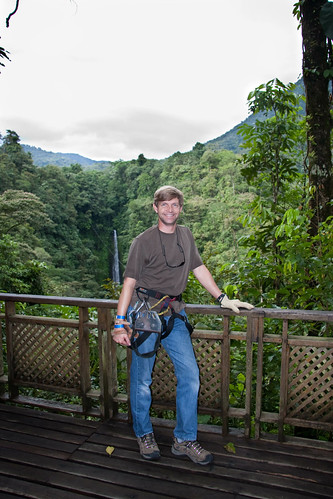
Getting psyched to zip over that waterfall.
A zip line is a cable strung between two points that you ride down alone, suspended from a pulley. In our case, the cables were stretched across deep rain forest canyons cut by a river, and included the dramatic La Fortuna Waterfall that was easily 100’ tall. Some of the cables spanned canyons hundreds of feet deep.
The first three cables were fairly short, and each was faster than the prior. This was to get you comfortable with the ride, with the proper position, and with controlling your speed for a gentler stop at the end.
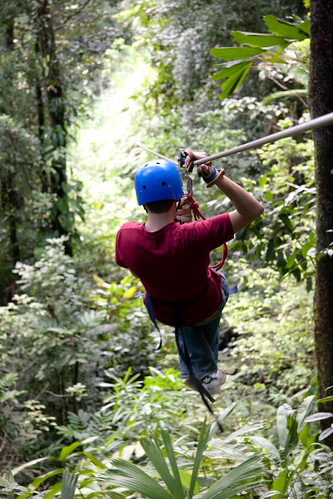
Kevin, riding into the light.
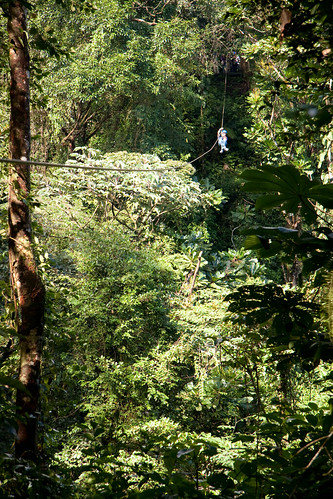
Viewed from the end of a cable with Eric coming down.
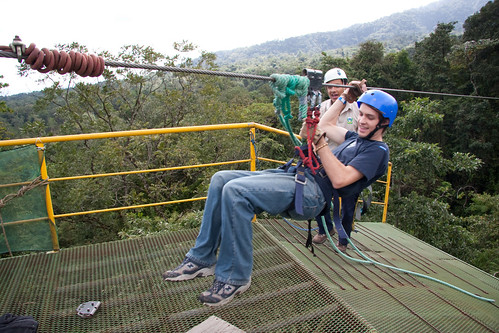
Eric, making a soft two point landing on one of the platforms.

I came in a little faster on this one.
The next seven rides were much longer and faster. The longest ride was almost a kilometer, and on the fastest cable they said we traveled at about 35-40 mph. The views were incredible, at one point looking straight down at the pool below the waterfall, on another line looking out to the city of Fortuna, and on another zipping across a canyon then into a hole cut through the canopy to ride between the trees. In total we traveled about three kilometers of cable over a 45 minute period.
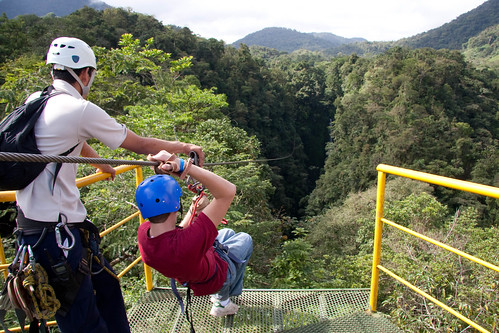
Another launch, this time on one of the longer cables. If you look and the larger version of this image (click to go to Flickr) you can just make out the landing platform next to the top of the waterfall.
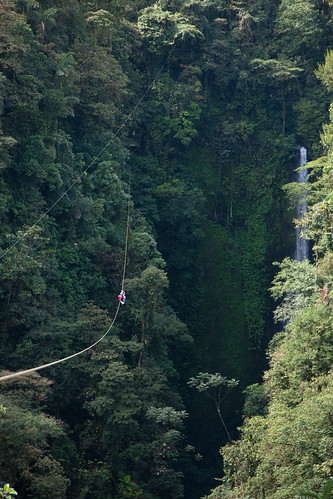
Yes, it’s a long way down.
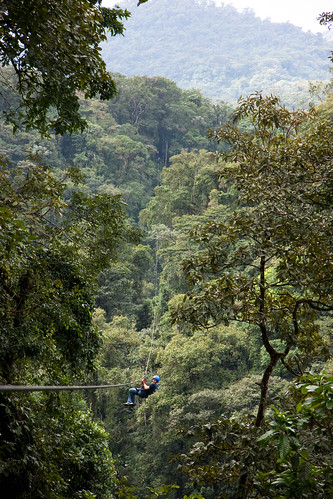
The longest cable, at 980 meters, goes over a waterfall and two canyons. That hole in the trees about 3/4s of the way up the image is the starting platform.
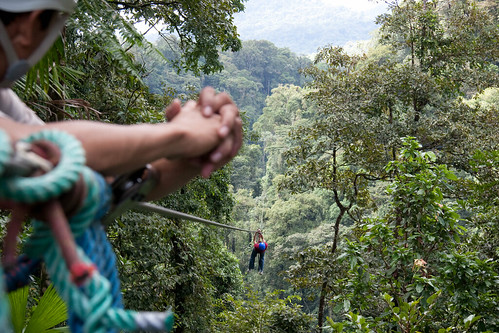
If you happen to slow down along the way, you might not make it to the end. In that case you get to haul yourself in, as demonstrated here by Kevin. Notice the concern expressed by our guide (left).
As a part of the adventure, after the zip lines you visit a re-creation of an indigenous Maleku village, then ride horses back down the dirt road to the main reception area.
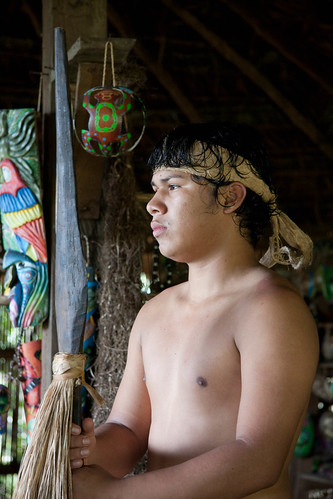
In their re-creation of an indigenous Costa Rican Maleku village, this young man told us about their lifestyle and culture.
Only one of our two guides rode down with us, and he stayed in the rear to make sure there weren’t any stragglers. The horses knew the routine so well that you didn’t have to use your reins. In fact, the herd was lead down the trail by an unsaddled black horse and no guide. A couple of times the horses would break into a trot, but otherwise it was a gentle and fun ride down. Eric’s saddle was missing the right stirrup though, so the trotting wasn’t quite so comfortable for him.
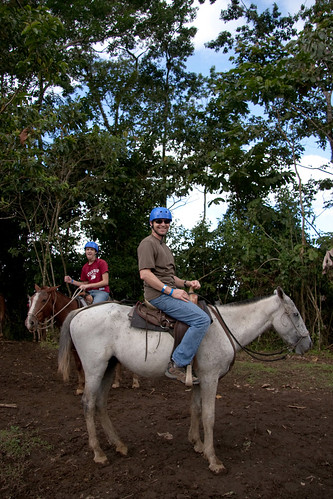
I’m such a cowboy. Even more impressive is Kevin in the background. They didn’t tell us the horses’ names, so Kevin called his ‘Rodeo’.
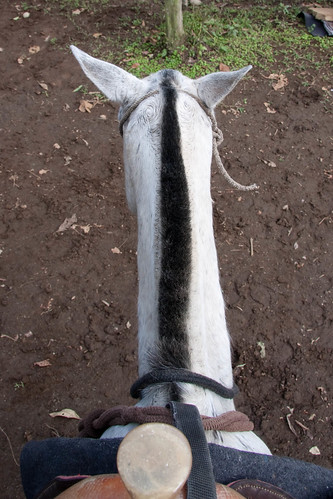
Mine: a horse with no name.
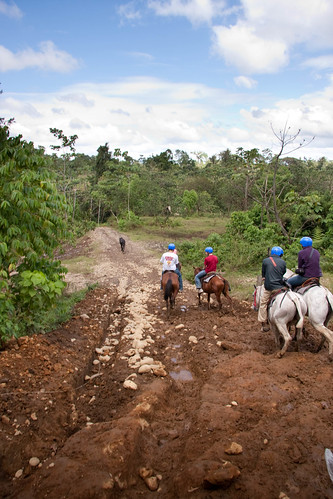
See that black horse way out front? He was our guide down the mountain.
We were taken back to the hotel, where we joined up for lunch with a few other people from our tour who had decided not to take the morning trip. After a nap and some R&R, we called a cab and headed into town to meet up with Sarah and the rest of the group.
